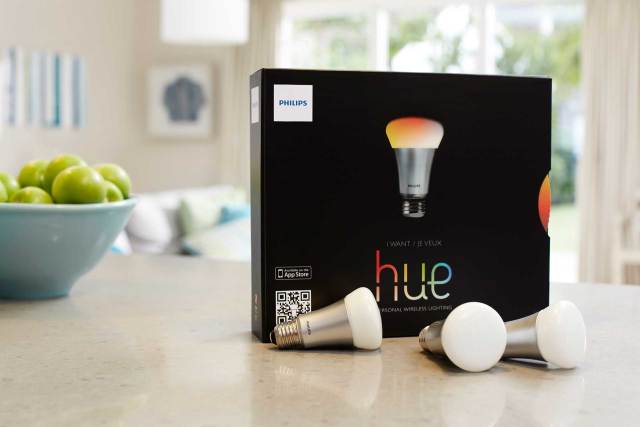Philips launches Hue bulb development program
- Transfer
Philips Hue - a lighting system that changes the idea of home lighting (multi-colored LED lamp with Wi-Fi module). And now this innovative system has an official developer program that allows manufacturers of third-party applications and equipment to continue what Philips started.

In fact, people have long been developing applications for the Hue system - for example, an iOS application allows you to turn Hue into light music, and the Minecraft add-on adjusts lighting for the game’s daily cycle. But, basically, all of these applications were developed using reverse engineering.
However, Philips realized what the developers wanted and decided to help them by providing the SDK and API for iOS, allowing software and hardware manufacturers to use the Hue features. Now developers can rely on these official tools as a stable channel for integrating Hue with their products.
Hue uses the ZigBee standard for home automation, which means that all elements of the smart, such as motion sensors, thermostats and other electrical appliances, can interact with each other in a single environment. New development tools will allow equipment manufacturers using these standards to create Hue-compatible functions, and the lights can be turned on through various actions - for example, when you open a door, or when the thermostat is set to a specific temperature.
Another potential area of application for these developer tools are photographic applications that can determine the level of light that can help them optimize lighting. Philips also plans in the future to use geo-positioning, schedules, and other smartphone sensor capabilities that can give developers new opportunities.
“About 10 applications have already been created by the informal community to implement the new application for Hue,” explains George Yanni, architect of the Hue system. “We want to support the community, as well as give it the necessary tools and documentation. We also promise that we will continue to support our API. ”
Yanni says the lack of official tools has prevented major developers and companies from creating their add-ons for Hue. This means that soon we will be able to observe how large companies begin to integrate Hue into their line of automated home devices.
Developer tools will be available free of charge to anyone who wants to create applications and devices related to the Hue system. Philips will also continue to expand its Hue product line. The contributions of the community and Philips themselves to the Hue ecosystem will help the lighting system become more than just a light bulb.

In fact, people have long been developing applications for the Hue system - for example, an iOS application allows you to turn Hue into light music, and the Minecraft add-on adjusts lighting for the game’s daily cycle. But, basically, all of these applications were developed using reverse engineering.
However, Philips realized what the developers wanted and decided to help them by providing the SDK and API for iOS, allowing software and hardware manufacturers to use the Hue features. Now developers can rely on these official tools as a stable channel for integrating Hue with their products.
Hue uses the ZigBee standard for home automation, which means that all elements of the smart, such as motion sensors, thermostats and other electrical appliances, can interact with each other in a single environment. New development tools will allow equipment manufacturers using these standards to create Hue-compatible functions, and the lights can be turned on through various actions - for example, when you open a door, or when the thermostat is set to a specific temperature.
Another potential area of application for these developer tools are photographic applications that can determine the level of light that can help them optimize lighting. Philips also plans in the future to use geo-positioning, schedules, and other smartphone sensor capabilities that can give developers new opportunities.
“About 10 applications have already been created by the informal community to implement the new application for Hue,” explains George Yanni, architect of the Hue system. “We want to support the community, as well as give it the necessary tools and documentation. We also promise that we will continue to support our API. ”
Yanni says the lack of official tools has prevented major developers and companies from creating their add-ons for Hue. This means that soon we will be able to observe how large companies begin to integrate Hue into their line of automated home devices.
Developer tools will be available free of charge to anyone who wants to create applications and devices related to the Hue system. Philips will also continue to expand its Hue product line. The contributions of the community and Philips themselves to the Hue ecosystem will help the lighting system become more than just a light bulb.
